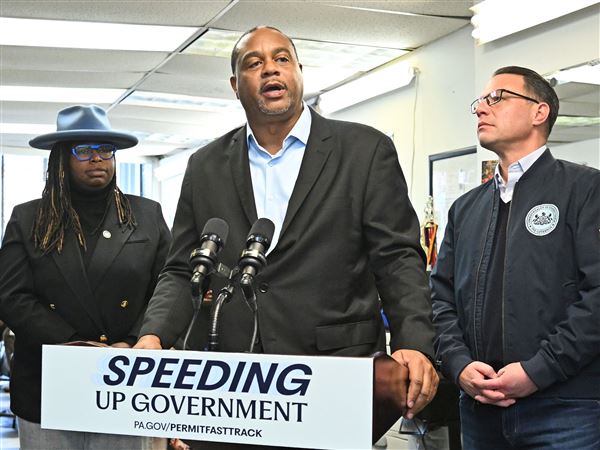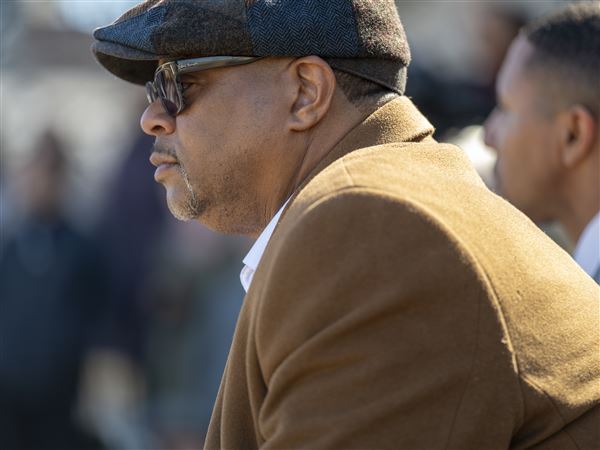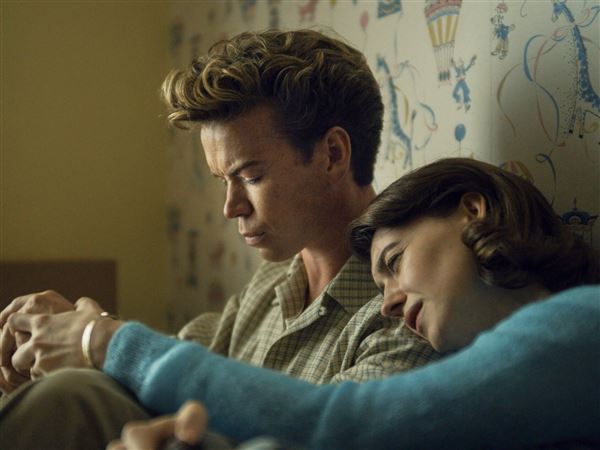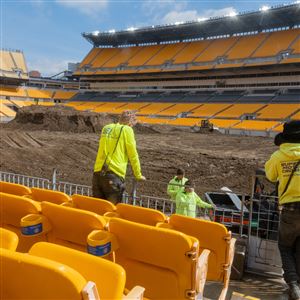There was one evening a few years ago when someone browsing the television channels could see Les Banos' face and European accent in two unrelated historical documentaries demonstrating the breadth of an unusual life.
In one made by the BBC, the Hungarian-born Mr. Banos was interviewed about the German occupation of his homeland during World War II, when he served in the Hungarian Nazi SS division while a spy for the Allies' OSS. He surreptitiously used his SS role to hide and assist Jews, enabling a number of them to avoid concentration camps.
In the other documentary for WQED, Mr. Banos, a longtime Pittsburgh sports photographer, talked about the life and death of his friend Roberto Clemente. He would have accompanied the Pirates star on his earthquake-relief plane that crashed in 1972 if not for the intervention of another iconic Pittsburgh sports moment: the Immaculate Reception.
His life was full of such moments and encounters that could have made for an amazing movie of its own about the high-energy Mr. Banos, who spent the last half of the 20th century photographing and filming notable sports and news events around Pittsburgh.
He died Sunday of cardiac arrest while en route from his longtime Penn Hills home to UPMC St. Margaret. He had been in good health throughout his 88 years until being stricken at home that day.
Before his official retirement in 1997, he worked in television starting in the 1950s for WQED and WTAE, and as a team photographer subsequently for the Pirates, the Steelers and the University of Pittsburgh athletic program.
Along the way, Mr. Banos' professional skills and personable, natural manner led not only to many great images -- some 50 of his photos hang at the Roberto Clemente Museum in Lower Lawrenceville today -- but close friendships with those he photographed, including Clemente and Steelers star Franco Harris. A number of athletes accustomed to being admired by others were impressed by Mr. Banos, especially once they got to know his background.
"It is amazing what Les accomplished when you look at his history," Mr. Harris said. "He was a great guy, always enjoyable -- a kind and gentle man, and you never would have expected what he went through by how kind and gentle he was."
Late in life, Ms. Banos was a frequent public speaker addressing student groups and others on behalf of the Holocaust Center of the Jewish Federation of Greater Pittsburgh.
Mr. Banos' own father was Jewish, which was concealed from the Nazi invaders of Hungary in 1944. Mr. Banos had been working on behalf of Allied intelligence efforts in Hungary since 1939, when he was a teenager, and eventually gained a position of responsibility within the SS. He interacted with German officers as high as Adolf Eichmann and found ways to spare the lives of innocents by falsifying orders and passing out safe conduct papers.
He also helped his aunt and uncle, owners of a Budapest factory, in hiding Jews and other potential victims in a secret space within the factory's sewer system. He worked with famed Swedish diplomat Raoul Wallenberg in such efforts, and he and his relatives were honored later with medals by both Hungarian and Israeli officials for their actions.
"Listening to him tell it, you just kind of sit there and shake your head, going 'Holy cow,' " said Samantha Patty, a senior associate at the Holocaust center. "But he was such an unassuming person, telling his story so matter-of-factly. He didn't think it was anything super-duper special, but he did want his story out. He wanted kids to hear it, to ensure something like the Holocaust never happened again."
He and Mr. Harris, in fact, were scheduled to co-chair an event in the fall to be co-sponsored by the Holocaust center and August Wilson Center for African American Culture commemorating the 75th anniversary of the 1936 Summer Olympics in Berlin, which showcased black U.S. track star Jesse Owens.
Mr. Banos and his German-born wife, Georgina, landed in Pittsburgh almost by accident in 1952 after they emigrated and ran out of funds. He had some film background from his days in Hungary and, after studying at Pitt, landed film photography jobs at WQED and then WTAE.
By the late 1960s, he was working on the staffs of both the Pirates and Steelers. He was befriended by Clemente, who liked his accent, among other things. They also shared a common concern about back pain, and the baseball star once worked over Mr. Banos' back with a baseball bat and heavy dab of Vaseline in a manner that the photographer said cured him forever.
They became so close that Mr. Banos was planning to join Clemente on Dec. 31, 1972, on a flight carrying relief supplies to earthquake victims in Managua, Nicaragua. Mr. Banos was to assist by filming the scenes of earthquake devastation and assistance.
That plane crashed off the coast of Puerto Rico, and Mr. Banos was not aboard because of what had occurred at Three Rivers Stadium on Dec. 23. Mr. Harris' miraculous touchdown in the closing seconds against the Oakland Raiders, with Mr. Banos filming for the team, meant he had to stay in Pittsburgh and work another playoff game on Dec. 31, when the Steelers faced the Miami Dolphins.
"Franco's miracle catch saved my life," he would say in interviews later. "I would have been on that plane. I had to call Bobby and tell him I couldn't come. He said OK, he'd make arrangements for us to meet after the playoffs."
One of Mr. Banos' best-known images is a photo he took of Clemente collecting his 3,000th hit the previous September. But he took many more photos that were each marvelous in their own way, said Duane Rieder, a photographer and executive director of the Clemente Museum.
"He had a lot of other shots people had never seen of Roberto that were great shots," Mr. Rieder said.
In addition to his wife, Mr. Banos is survived by three sons, Robert of West View, Michael of Penn Hills and Edward of Longview, Texas; two daughters, Karen Banos of Philadelphia and Kristine Leonard of Ormond Beach, Fla; and five grandchildren.
Friends will be received from 2 to 4 and 7 to 9 p.m. today at William F. Gross Funeral Home, 11735 Frankstown Road, Penn Hills. There will be no public funeral service.
First Published: April 26, 2012, 5:15 a.m.
Updated: April 26, 2012, 5:15 a.m.















